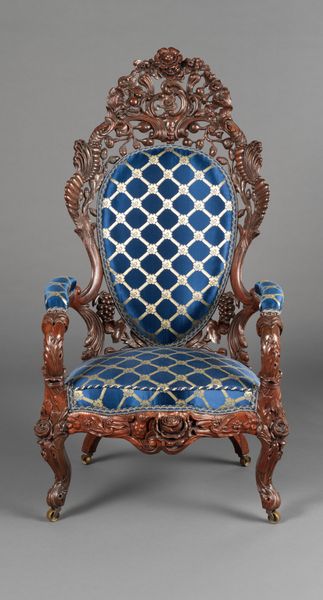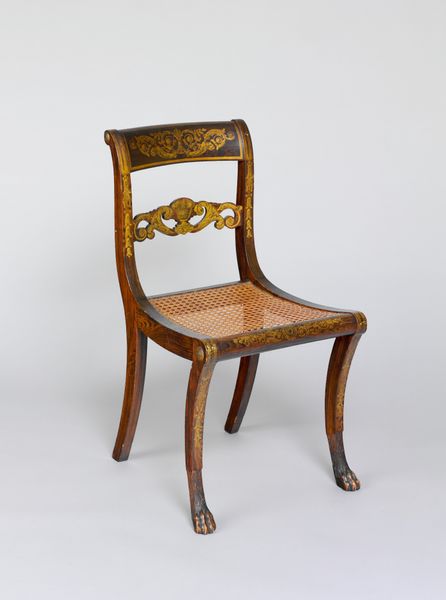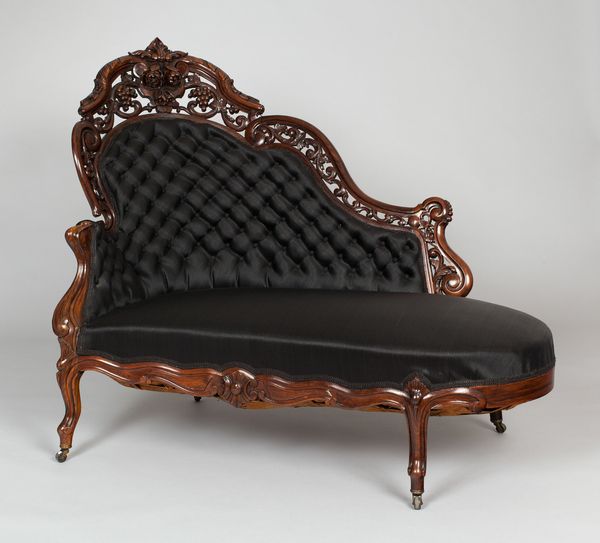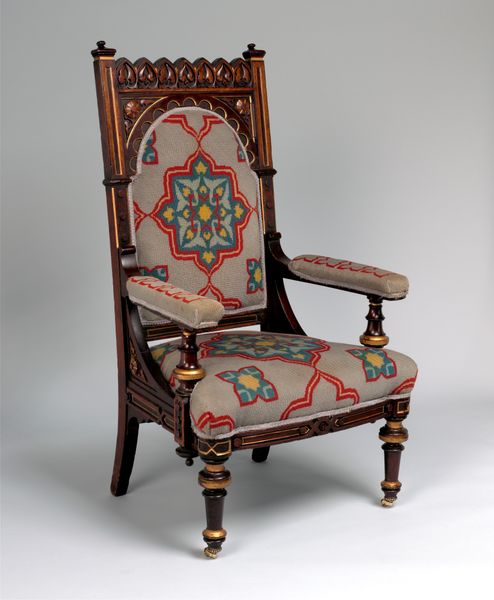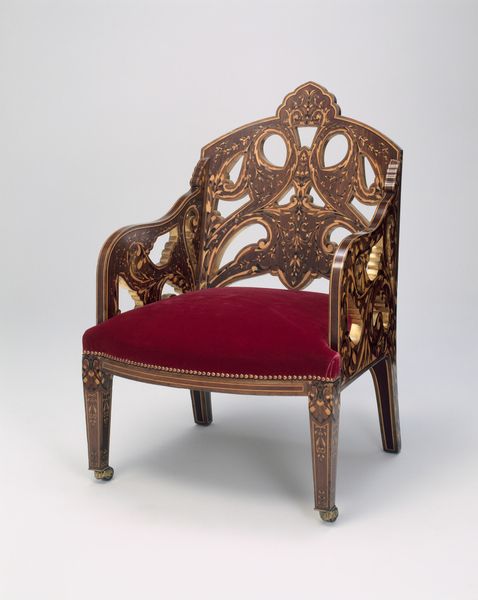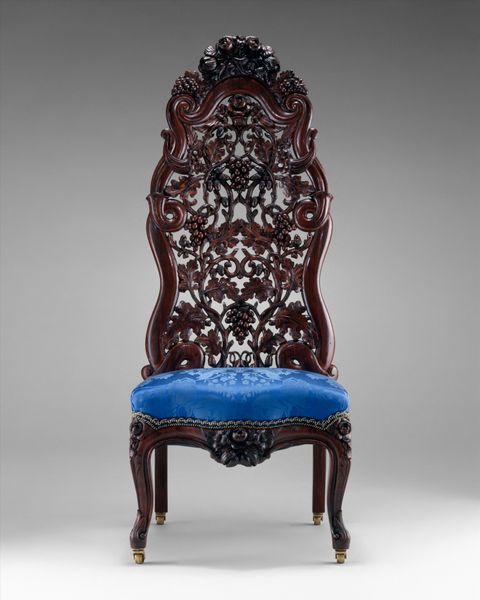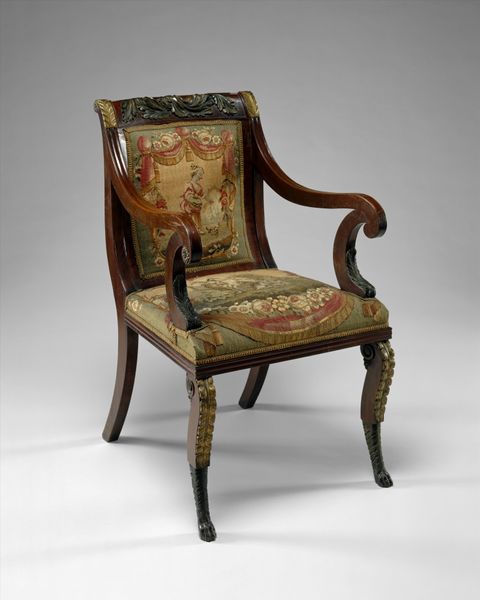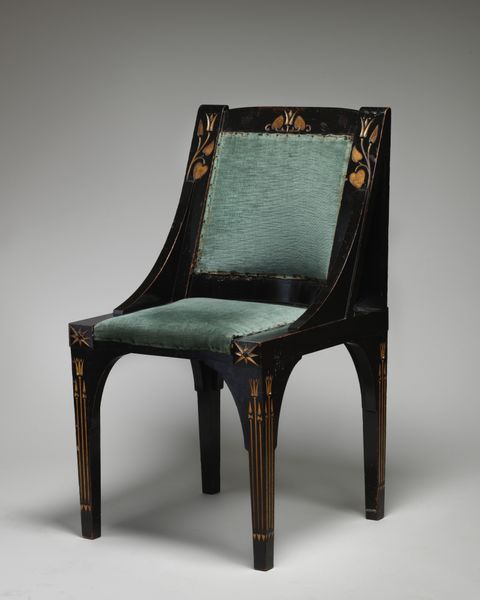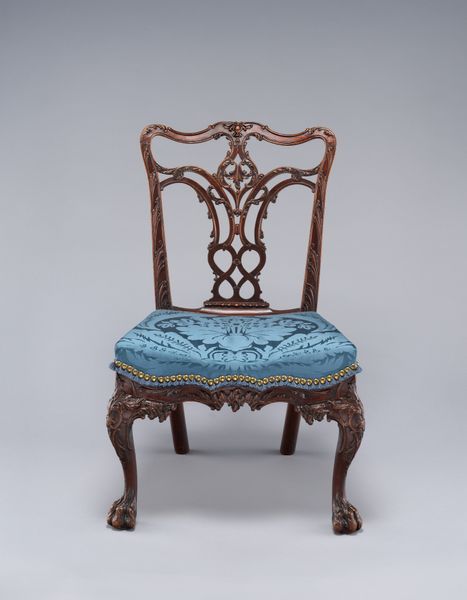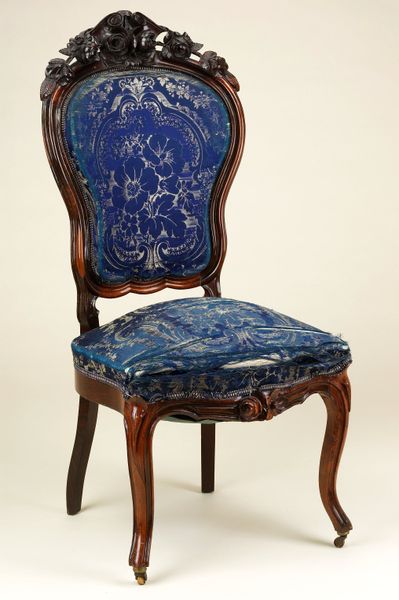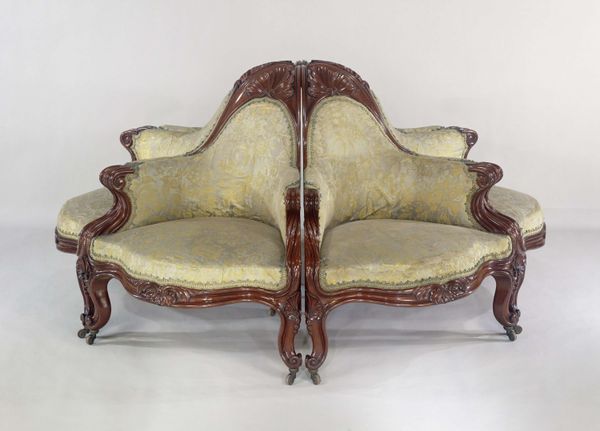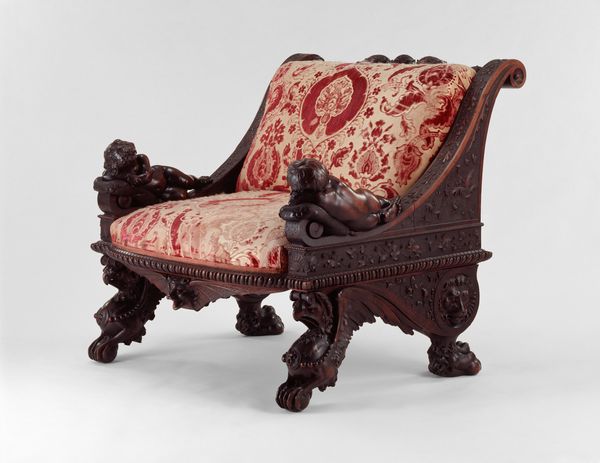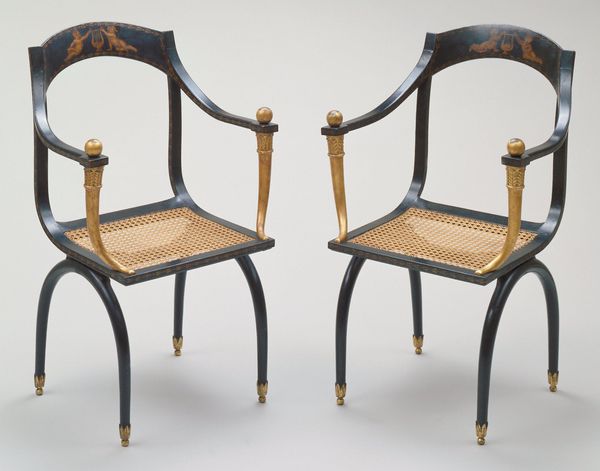
Dimensions: 44 1/2 x 52 x 43 in. (113 x 132.1 x 109.2 cm)
Copyright: Public Domain
This is an opulent Tête-à-tête, or 'head-to-head', made by John Henry Belter, sometime in the mid-19th century. The curves of the laminated rosewood, the plush blue upholstery with its geometric gold pattern, all speak to the Victorian era's fascination with luxury and romantic intimacy. Belter was a German immigrant who made a name for himself catering to the elite of New York City. His furniture became synonymous with wealth and status, gracing the homes of merchants and industrialists. Yet, this gilded object hides the reality of the labor that produced it. Enslaved people in the South cultivated the cotton that became the upholstery, while immigrant workers in Belter's factory, likely toiling in harsh conditions, shaped the wood into these elaborate forms. Consider the social rituals this piece might have hosted: hushed conversations between women, perhaps, negotiating the constraints of their gendered roles. The Tête-à-tête becomes a stage for the performance of social life, where power, desire, and identity intertwine. It is a tangible reminder of the complex intersections of beauty, privilege, and exploitation that shaped the 19th century.
Comments
No comments
Be the first to comment and join the conversation on the ultimate creative platform.
